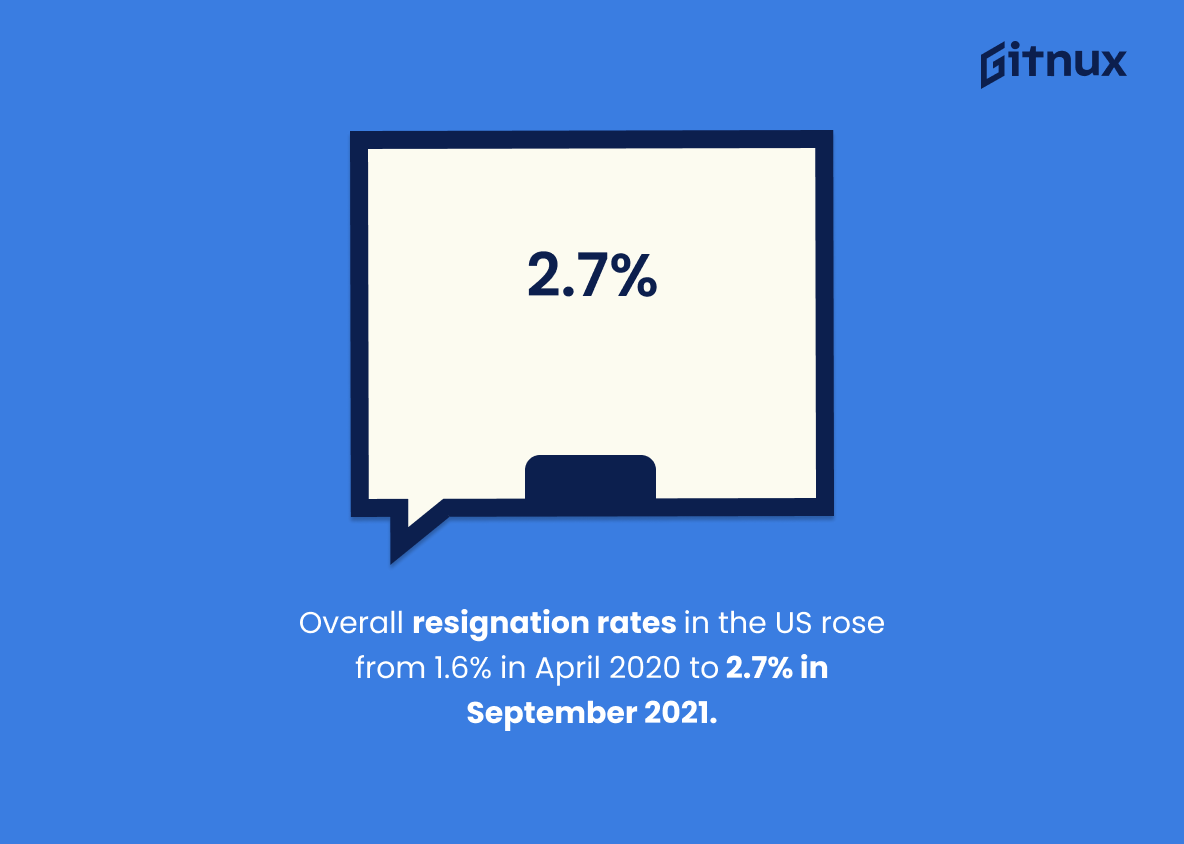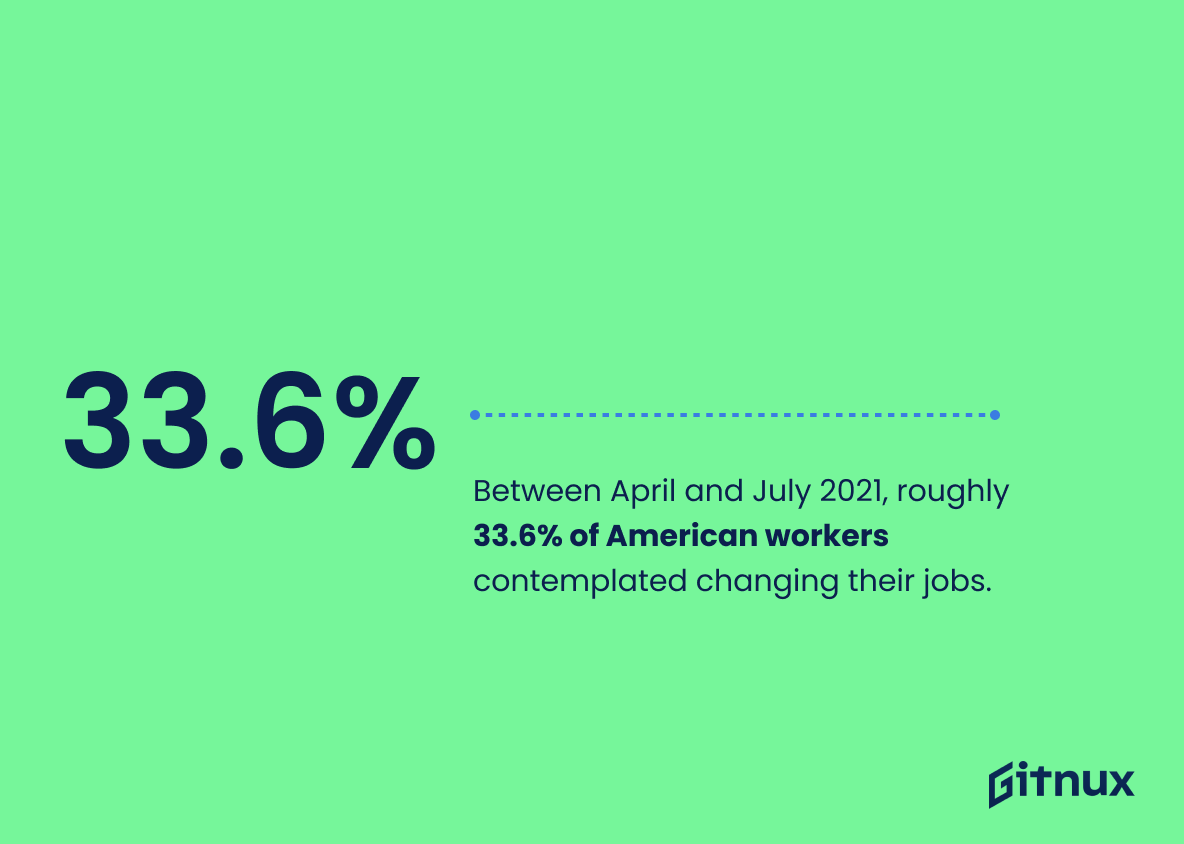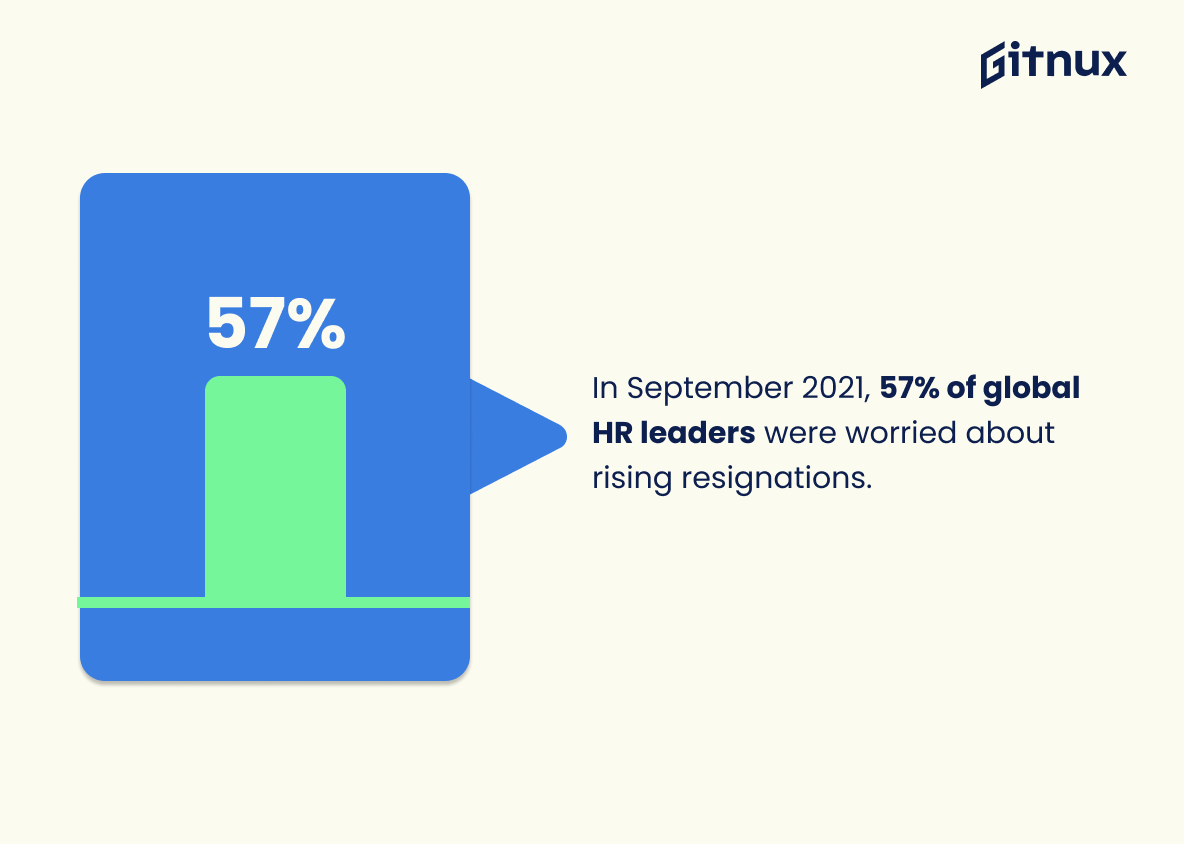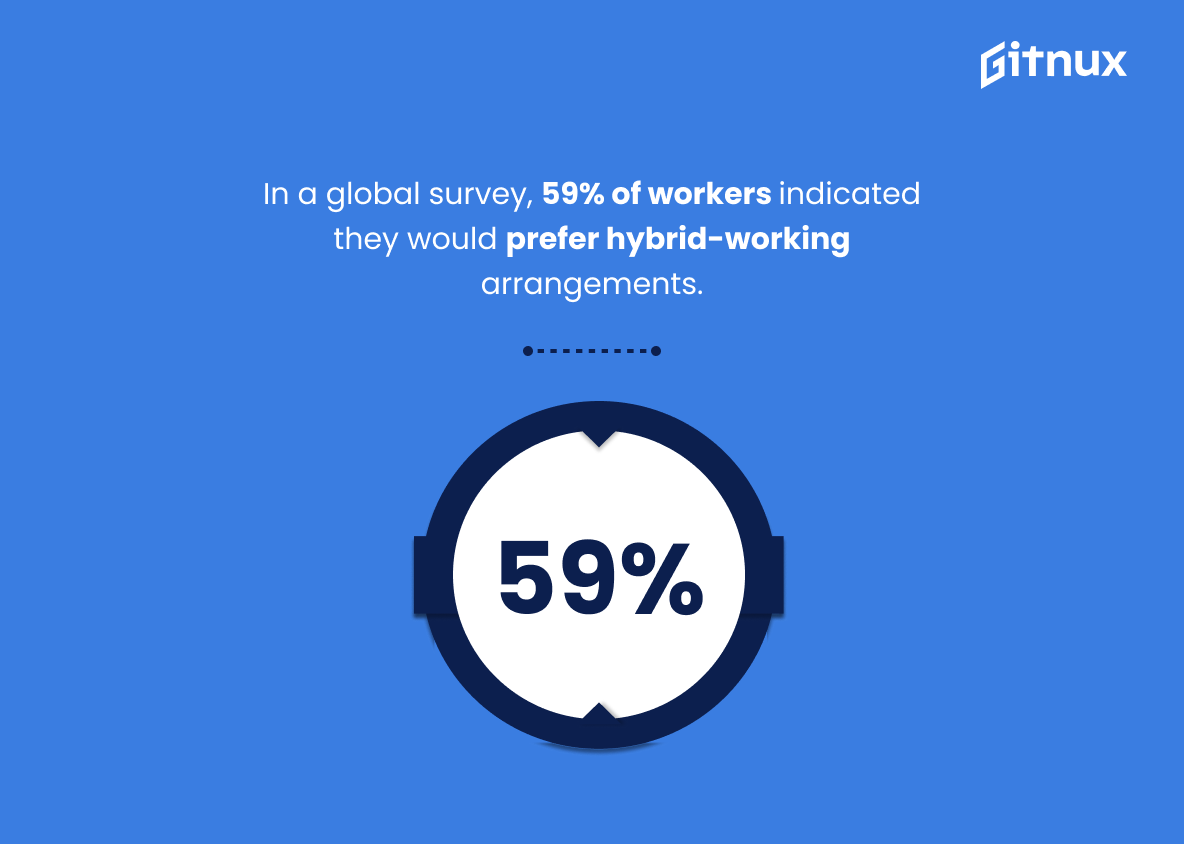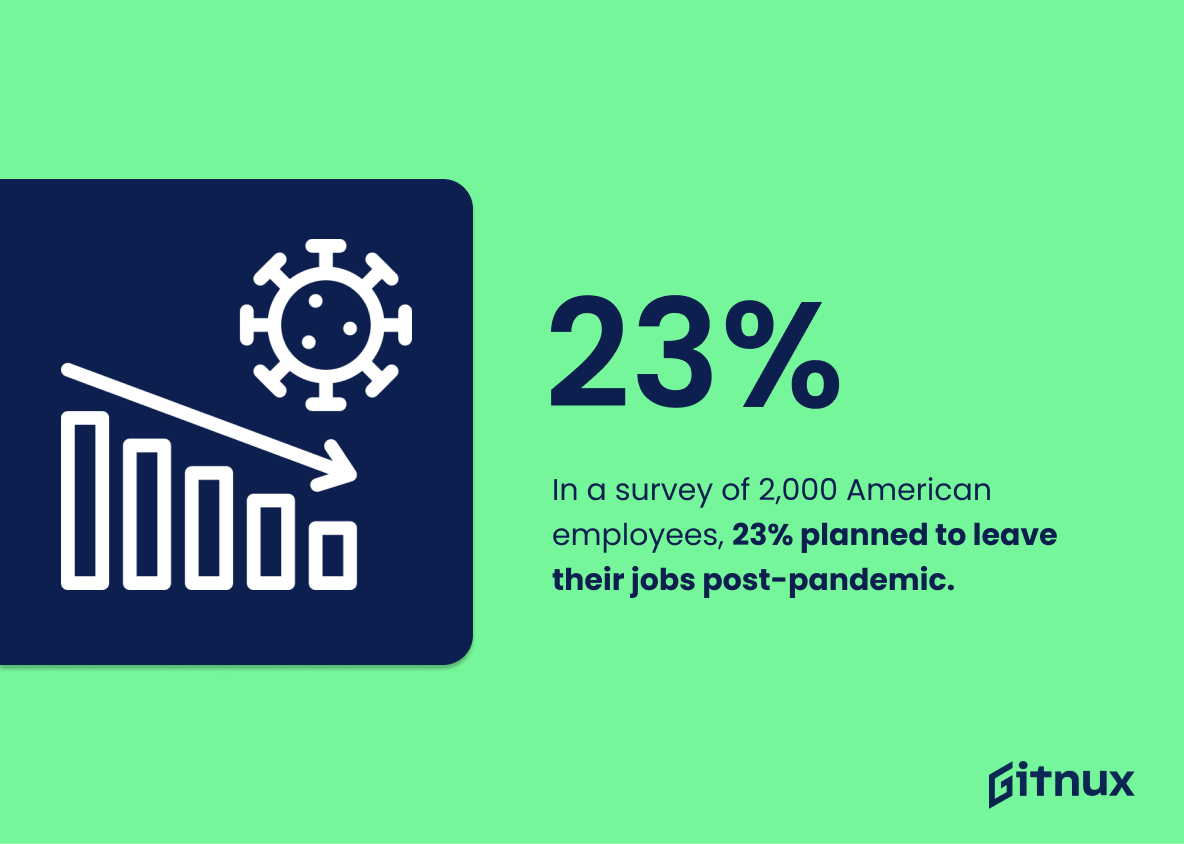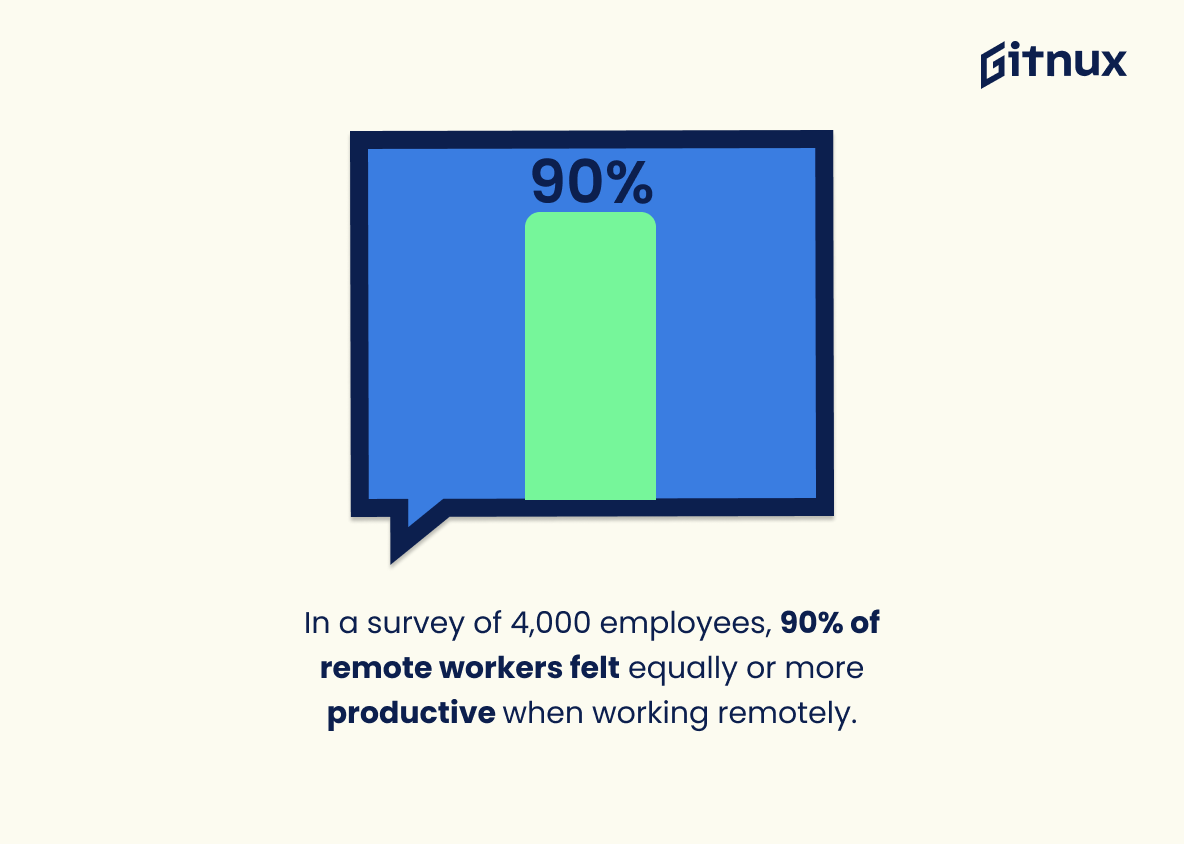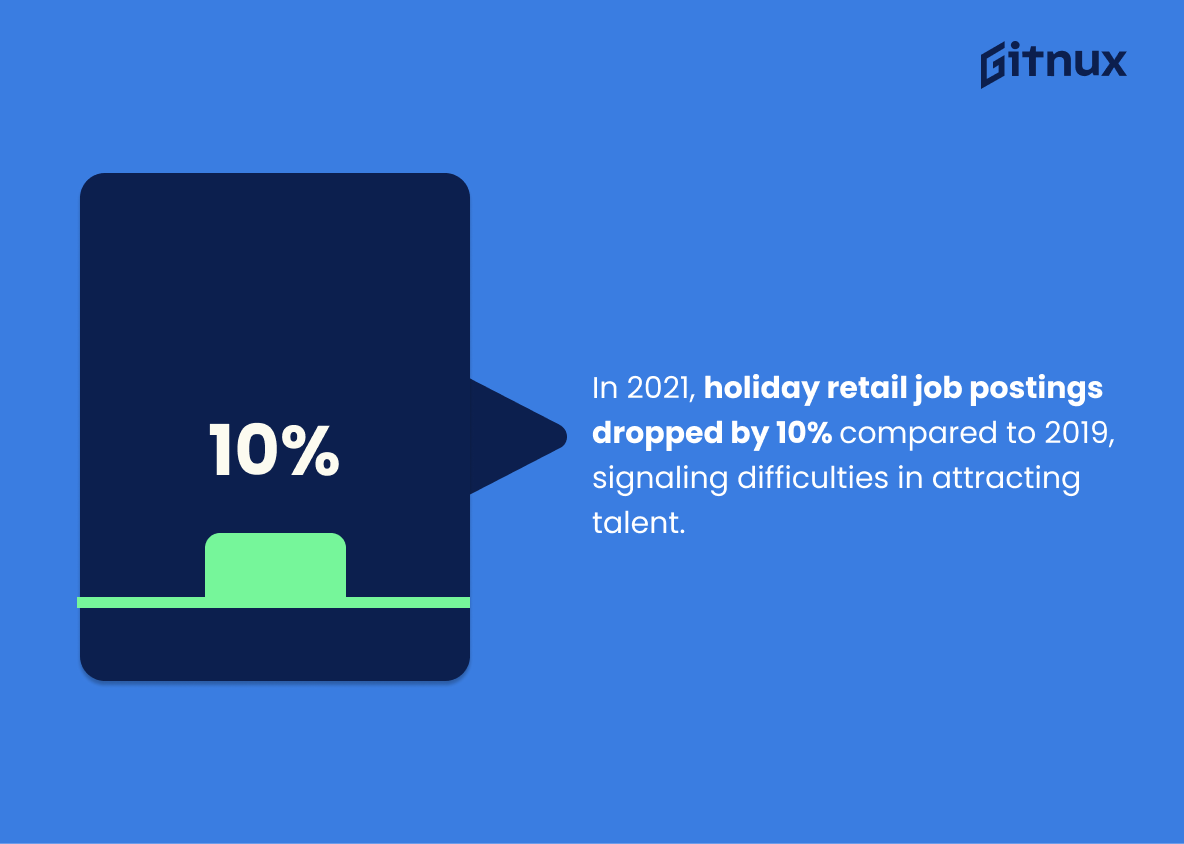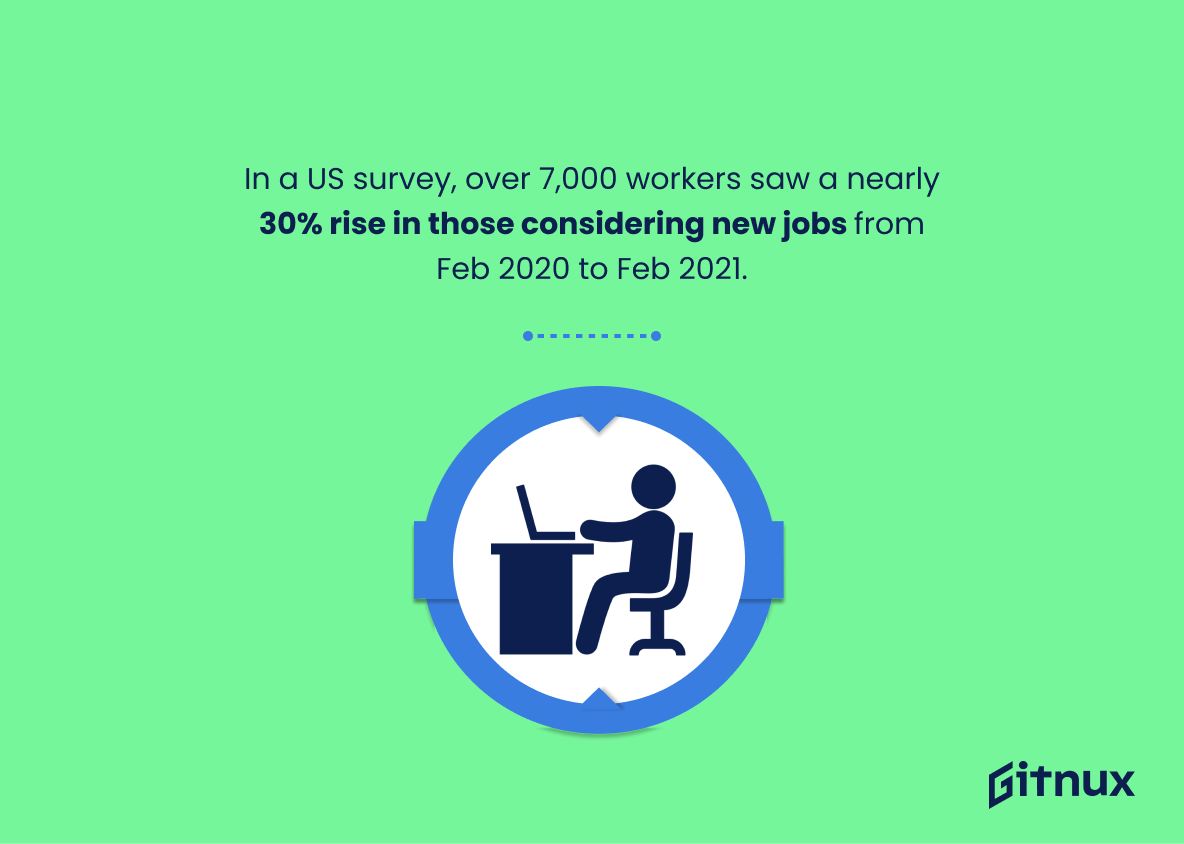The Great Resignation is a phenomenon that has been sweeping the world in 2021. With millions of Americans, Britons and people from other countries quitting their jobs or considering changing careers, it’s clear that something big is happening. This blog post will explore some of the key statistics behind this trend to give readers an insight into what’s driving these changes.
In April 2021 alone, around 4 million Americans quit their jobs according to data from the Bureau of Labor Statistics (BLS). In September 2021, this number had risen further with 4.4 million resignations recorded by BLS – representing an overall resignation rate increase from 1.6% in April 2020 to 2.7% in September 2021 as reported by The Economist magazine . Meanwhile job vacancies rose significantly too; for example 318,000 new roles were created across Britain between May and August 2021 according to figures released by the Office for National Statistics (ONS).
These trends are being driven largely by workers’ desire for more flexible working arrangements such as remote work opportunities which have become increasingly available due to COVID-19 restrictions on office life over recent months.. A survey conducted globally found that 59% of respondents would prefer hybrid-working arrangements going forward while 66% said increasing resignations were a concern among HR leaders worldwide during Q3/Q4 2020/2021 period . Additionally 33.6 % American workers changed or considered changing their jobs between April and July , indicating how much demand there was for alternative employment options at this time .
This blog post will delve deeper into these stats along with many others related to The Great Resignation including those relating specifically US physicians who experienced 11 % drop in job satisfaction since last year , UK employees actively looking out for new positions 38%, global workforce open towards career change 50%, Canadian citizens leaving current posts up 50%. We’ll also look at why wages remain so important when making decisions about whether or not stay put – particularly given record high US job openings reaching 11 million mark back in July – plus examine retail industry struggles amid pandemic where holiday postings decreased 10%. Finally we’ll consider findings from two surveys: one involving 12 000 British participants revealing 40 percent wanting higher pay before switching employers ; another featuring 2000 American staff members 23 percent planning exit once Covid 19 subsides
Great Resignation Statistics Overview
In the UK, job vacancies rose by 318,000 in the three months to August 2021.
This statistic is a testament to the fact that the job market in the UK is on the rise, with 318,000 new vacancies in the three months to August 2021. This is a positive sign for those looking to make a career change, as it indicates that there are more opportunities available for those seeking new employment. This is great news for those looking to resign from their current job and pursue a new career path.
Overall resignation rates in the US rose from 1.6% in April 2020 to 2.7% in September 2021.
This statistic is a telling indication of the impact of the pandemic on the US workforce. It shows that more and more people are feeling the need to resign from their jobs due to the economic uncertainty and instability caused by the pandemic. This statistic is a powerful reminder of the importance of understanding the current job market and the need for employers to be flexible and supportive of their employees during this difficult time.
Between April and July 2021, about 33.6% of American workers changed or considered changing their jobs.
This statistic is a telling indication of the current job market. It shows that a significant portion of American workers are actively looking for new opportunities, either out of necessity or out of a desire for change. This statistic is a great example of how the job market is constantly shifting and evolving, and it serves as a reminder that job seekers should always be on the lookout for new opportunities.
By September 2021, 57% of global HR leaders stated that increasing resignations were a concern for their organizations.
This statistic is a stark reminder of the importance of understanding the reasons behind resignations and taking steps to address them. It highlights the need for organizations to be proactive in addressing employee dissatisfaction and creating an environment where employees feel valued and supported. By understanding the causes of resignations, organizations can take steps to reduce turnover and create a more positive work environment. This statistic is a powerful reminder of the need for organizations to take action to ensure their employees are happy and engaged.
In 2021, 66% of remote workers considered a career change.
This statistic is a telling indication of the current state of remote work. It suggests that many remote workers are feeling dissatisfied with their current career paths and are looking for something new. This is an important statistic to consider when discussing resignation statistics, as it provides insight into the motivations behind why people are leaving their current positions.
In Canada, the number of people quitting their jobs increased by 50% from Q2 2020 to Q2 2021.
This statistic is a powerful indicator of the changing job market in Canada. It shows that more people are feeling confident enough to leave their current positions and pursue new opportunities. This could be due to an increase in job openings, better wages, or other factors. It’s an important statistic to consider when discussing the current state of the job market in Canada, and it’s a great example of how the job market is evolving.
Over 40% of workers in a global survey (across 10 countries) said they were considering leaving their jobs.
This statistic is a stark reminder of the importance of job satisfaction in the workplace. It suggests that a significant portion of the global workforce is not content with their current job, and is actively considering leaving. This is a worrying trend, and one that employers should take seriously if they want to retain their best talent.
Physicians in the US experienced an 11% drop in job satisfaction between 2020 and 2021.
This statistic is a stark reminder of the toll the pandemic has taken on the mental health of physicians in the US. It highlights the immense pressure and stress that healthcare workers have been under in the past year, and the need for greater support and resources to help them cope with the demands of their job. It is a powerful reminder that the effects of the pandemic are far-reaching and that we must continue to prioritize the wellbeing of our healthcare workers.
About 50% of workers in a US survey mentioned the desire for higher wages as a reason for considering a job change.
This statistic is a powerful indicator of the current state of the job market in the US. It suggests that many workers are not satisfied with their current wages and are actively looking for better opportunities. This highlights the importance of offering competitive salaries to employees in order to retain them and keep them motivated. It also serves as a reminder to employers that they should be aware of the current market trends and adjust their wages accordingly.
In a global survey, 59% of workers indicated they would prefer hybrid-working arrangements.
This statistic is a telling indication of the changing landscape of the workplace. It suggests that the majority of workers are now looking for a balance between working from home and in the office, rather than a purely traditional approach. This shift in preference could have a significant impact on the way businesses operate in the future, and is certainly worth noting in a blog post about resignation statistics.
A survey of 2,000 American employees found that 23% planned to leave their jobs once the COVID-19 pandemic subsided.
This statistic is a powerful indicator of the impact the COVID-19 pandemic has had on the American workforce. It shows that a significant portion of employees are feeling the strain of the pandemic and are looking to make a change once it is over. This statistic is an important reminder of the importance of understanding the needs of employees and providing them with the support they need during difficult times.
90% of remote workers in a survey of 4,000 employees felt they were as productive or more productive when working remotely.
This statistic is a powerful testament to the effectiveness of remote work. It shows that, despite the challenges of working from home, the majority of employees are still able to remain productive and get their work done. This is an important statistic to consider when discussing resignation statistics, as it suggests that remote work can be a viable option for those looking to leave their current job and pursue other opportunities.
US job openings reached a record high of 11 million in July 2021.
This record-breaking statistic is a testament to the current state of the US job market – one that is thriving and offering more opportunities than ever before. It’s a sign that the economy is on the upswing and that more people are finding gainful employment. This is great news for those looking to make a career change or take on a new job, as it means there are more options available than ever before. It’s also a reminder that resigning from a job can be a positive step in the right direction, as it opens up the possibility of finding a better fit elsewhere.
Analysis found that 2021 holiday retail job postings decreased by 10% compared to 2019, indicating employers’ struggle to attract talent.
This statistic is a telling sign of the current job market, highlighting employers’ difficulty in finding qualified talent for the 2021 holiday season. It serves as a reminder of the importance of having a strong resume and job search strategy to stand out from the competition. This statistic is a great example of how the job market can be unpredictable and ever-changing, and how important it is to stay up-to-date on the latest trends.
In a survey of over 7,000 workers in the US, the number of workers considering a new job increased by nearly 30% between February 2020 and February 2021.
This statistic is a powerful indicator of the current job market. It shows that despite the economic downturn caused by the pandemic, many workers are still looking for new opportunities. This suggests that the job market is still relatively strong and that people are still willing to take risks and make changes in their careers. This is an important statistic to consider when discussing great resignation statistics, as it shows that people are still willing to take the plunge and make a change in their lives.
Conclusion
The Great Resignation has been a major trend in the job market over the past year. The statistics presented here demonstrate that this phenomenon is widespread, with millions of Americans quitting their jobs and many more considering doing so. This shift can be attributed to several factors, including an increase in remote work opportunities, dissatisfaction with wages or working conditions, and a desire for greater flexibility among workers. As employers struggle to attract talent during these uncertain times, it’s clear that they must rethink their strategies if they want to remain competitive in today’s labor market.
References
0. – https://www.bls.gov
1. – https://www.bcg.com
2. – https://www.apnews.com
3. – https://www.pewresearch.org
4. – https://www.flexjobs.com
5. – https://www.gartner.com
6. – https://www.ons.gov.uk
7. – https://www.jacksonhealthcare.com
8. – https://www.slack.com
9. – https://www.needham.bluematrix.com
10. – https://www.50.statcan.gc.ca
11. – https://www.economist.com

